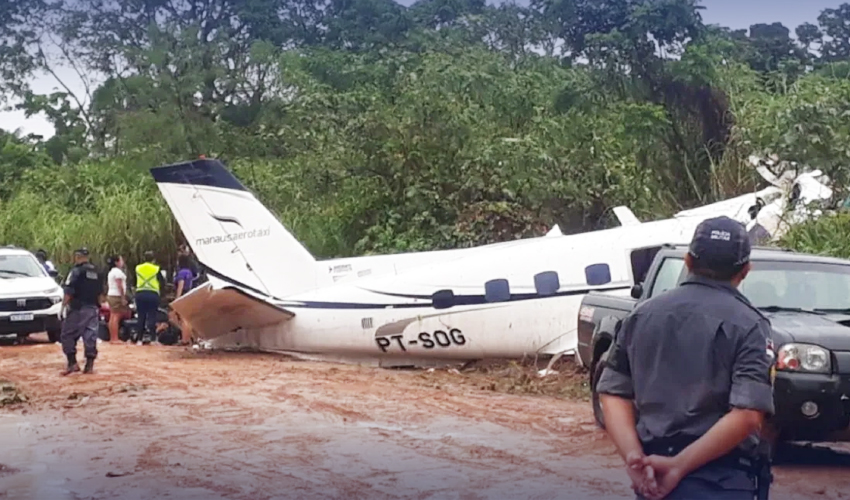Common Causes of Plane Crashes in Brazil: Brazil Plane Crash Type

Brazil, a country with a vast and complex aviation system, has experienced its fair share of plane crashes over the years. Understanding the common causes behind these tragedies is crucial for improving safety measures and preventing future accidents. While the aviation industry has made significant strides in safety, certain factors continue to contribute to crashes, making it essential to address them proactively.
Pilot Error
Pilot error is a significant contributing factor to plane crashes worldwide, and Brazil is no exception. This can range from simple mistakes in judgment to more serious violations of procedures. Examples include:
- Loss of situational awareness: This occurs when pilots fail to recognize and respond to critical information, such as weather conditions or aircraft malfunctions. For instance, in 2015, a TAM Airlines flight crashed in São Paulo due to the pilot’s failure to recognize the aircraft’s descent rate, leading to a runway overrun and a fatal collision.
- Improper aircraft handling: Pilots may make errors in controlling the aircraft, such as misjudging the approach or failing to maintain altitude, which can lead to a stall or a crash. A 2017 incident involving a GOL Airlines flight highlighted this issue, where the pilot’s improper handling during takeoff resulted in the aircraft veering off the runway.
- Inadequate training: Lack of proper training or experience can also contribute to pilot error. In some cases, pilots may not be adequately prepared for challenging situations or unfamiliar aircraft types. A 2018 study by the Brazilian National Civil Aviation Agency (ANAC) found that a significant portion of pilot errors were attributed to inadequate training, particularly in areas such as emergency procedures and instrument flight rules (IFR).
Mechanical Failure, Brazil plane crash type
Mechanical failure can occur in any aircraft, and it can be a major cause of crashes. These failures can range from minor issues to catastrophic events. Some common examples include:
- Engine failure: This can happen due to a variety of factors, such as faulty parts, improper maintenance, or foreign object damage. A 2016 incident involving a Azul Airlines flight experienced an engine failure during flight, forcing an emergency landing.
- Hydraulic system failure: The hydraulic system is essential for controlling the aircraft’s flight surfaces, such as the ailerons, elevators, and rudder. A failure in this system can make it difficult or impossible to control the aircraft. In 2019, a LATAM Airlines flight experienced a hydraulic system failure shortly after takeoff, leading to a dramatic emergency landing.
- Structural failure: This can occur due to fatigue, corrosion, or improper maintenance. A 2020 investigation into a cargo plane crash in the Amazon revealed that the aircraft’s structural integrity had been compromised due to years of neglect and improper maintenance.
Weather Conditions
Weather conditions can play a significant role in aviation accidents. Turbulence, thunderstorms, and fog can all create hazardous conditions for pilots.
- Severe turbulence: This can cause damage to the aircraft and injure passengers. In 2014, a Gol Airlines flight encountered severe turbulence over the Atlantic Ocean, resulting in injuries to several passengers and significant damage to the aircraft.
- Thunderstorms: These can produce strong updrafts and downdrafts, hail, and lightning, all of which can be dangerous to aircraft. A 2017 incident involving a TAM Airlines flight resulted in a lightning strike during a thunderstorm, causing damage to the aircraft’s electrical system and forcing an emergency landing.
- Fog: This can reduce visibility, making it difficult for pilots to see the runway and other aircraft. A 2018 incident involving a small aircraft near Rio de Janeiro resulted in a fatal crash due to low visibility caused by fog.
Terrorism
While terrorism is a relatively rare cause of plane crashes in Brazil, it remains a serious threat. Terrorist attacks can target aircraft in various ways, including hijackings, bombings, and sabotage.
- Hijackings: This involves taking control of an aircraft by force. A 1970 incident involving a Varig Airlines flight was hijacked by a group of militants demanding the release of political prisoners. The hijacking ended peacefully, but it highlighted the vulnerability of aircraft to this type of attack.
- Bombings: This involves placing an explosive device on an aircraft, either in the cargo hold or the passenger cabin. In 2000, a failed attempt to bomb a Brazilian aircraft over the Atlantic Ocean was thwarted by security measures. The incident revealed the importance of stringent security protocols at airports and on aircraft.
- Sabotage: This involves damaging an aircraft to cause it to malfunction or crash. A 2001 incident involving a small aircraft in Brazil was suspected to be a case of sabotage, but the investigation was inconclusive. This incident highlighted the need for robust security measures to protect aircraft from malicious acts.
Brazil plane crash type – Brazil has unfortunately experienced a number of plane crashes throughout its history, with various contributing factors ranging from mechanical failure to human error. While the specific types of crashes vary, understanding the causes behind these tragic events is crucial for safety improvements.
It’s important to stay informed about recent incidents, like those covered in plane crash today , to learn from past mistakes and prevent future tragedies. By studying the causes of plane crashes in Brazil, we can work towards a safer future for air travel.
The investigation into the Brazil plane crash type revealed a complex interplay of factors, including pilot error, mechanical failure, and weather conditions. This reminds us of the importance of rigorous safety protocols and thorough investigations, similar to the critical analysis presented in the abc debate , which highlighted the need for transparency and accountability in addressing complex issues.
Understanding the contributing factors to the Brazil plane crash type can help prevent similar tragedies in the future.
